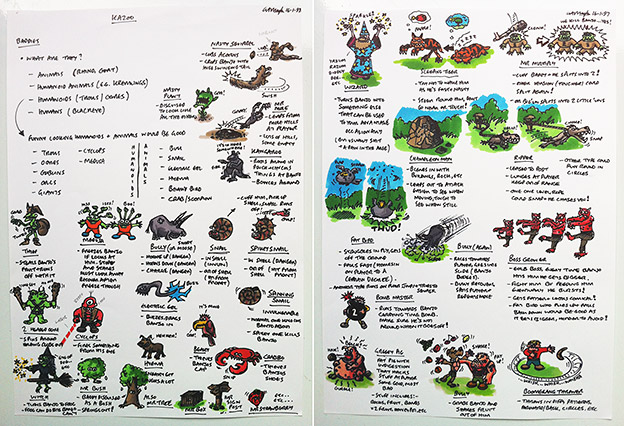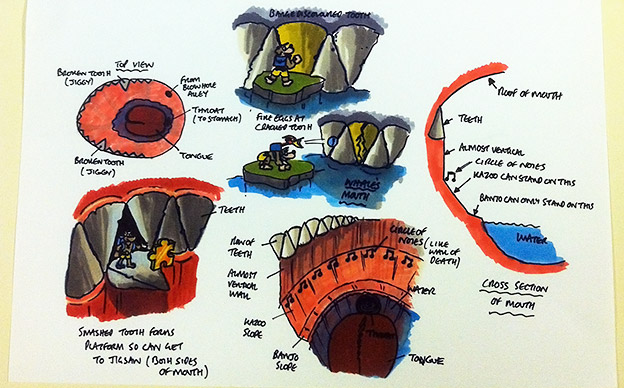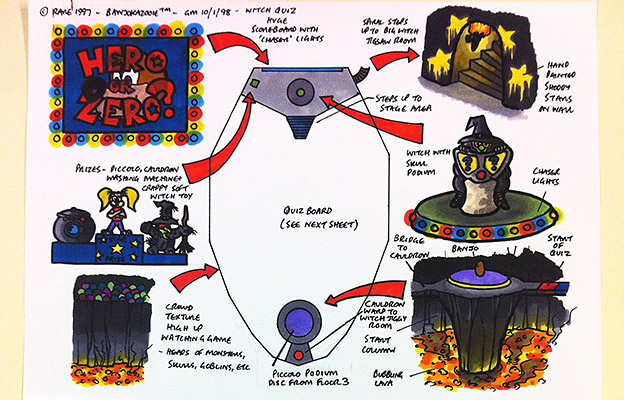Banjo at 20: Gregg Mayles Interview
This interview was featured on Rare’s official site on June 28th, 2018 – it is preserved here for posterity.
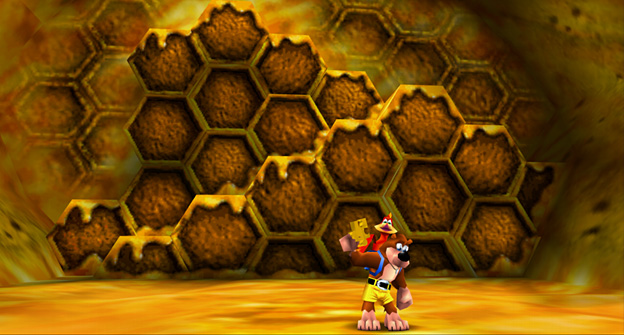
By Leigh Loveday on 28 Jun 2018
In 33 years we’ve made a whole lot of games. A side-effect of this longevity is that it’s almost always the anniversary of something, and attempting to go big on all of them would severely dent our sanity. That being said, it’s natural that some games struck a more resounding chord than others, and in 1998 it was Banjo-Kazooie‘s turn to join this companionable club.
So we’ve pushed the boat out for this 20th anniversary with various Banjo-Kazooie tie-in treats that are either up for grabs right now or coming very soon. And of course it wouldn’t be right to let the occasion pass by without a few words from series designer Gregg Mayles, who’s been there since the days before Banjo the bear became Banjo (or a bear). We caught up with Gregg on the arrival of this anniversary to stick our impertinent beaks into his memories of that very first adventure.
Rare: What goes through your mind when you look back at Banjo-Kazooie 20 years later? Do your feelings towards that project differ from others you’ve worked on?
Gregg: That I’m getting old! There are plenty of fresh-faced youngsters at Rare who have been alive for less time than I’ve been making games.
Each game has its own memories, some things you remember fondly and others less so. There are three things that I’d say best sum up my feelings for the game.
Banjo had a great team. At its core was a group of people who had already been working together for a couple of projects, so we were able to use this familiarity to say exactly what we thought in order to push the quality bar as high as we could. We set Super Mario 64 as our target to beat and really went for it.
Designing the worlds taught me how to think in 3D. I’d stare out of a window for hours (nothing’s changed there) and imagine myself standing in every part of the world, thinking about what I would see. I wanted to look at the game through the player’s eyes before I’d even picked up a pencil to start drawing.
It was a game that look a long, interesting and challenging journey – starting in 1995 after DKC2 as an adventure game, going through a couple of variants of this under the name Dream, moving briefly on to a 2.5D side-scrolling platformer (see image below), before finally being released in 1998 as a 3D platformer. Three years might not seem a lot of time to develop a game (Sea of Thieves took four years from concept to its initial release), but it was an age in 1998!
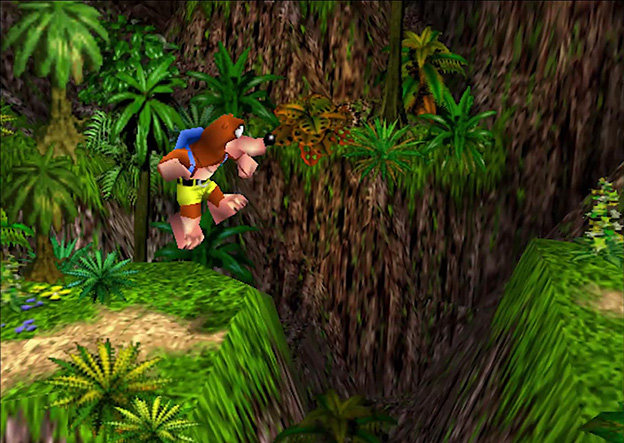
Rare: Which specific ideas or moments in the original Banjo-Kazooie would you say stand up to anything you’ve designed since?
Gregg: I’ve always tried to be a designer who considers the emotions I want players to feel in addition to what they are actually doing. I consider Sea of Thieves to be the game I have achieved this with the most, but the approach can be traced back to Banjo and is responsible for some of the moments I think have stood the test of time.
Feeling vertigo and potential doom when standing on top of Treasure Trove Cove’s Lighthouse or high in Click Clock Woods’ tree, being nervous when trying to get the notes in Rusty Bucket Bay’s engine room or the shock of seeing Clanker for the first time as you swim though the tunnel in Clanker’s Cavern. These moments, rather than anything else, are the things I’d like Banjo to be remembered for and certainly compare well (in my opinion of course!) to anything I’ve created since.
Rare: So which strands of design DNA would you say connect Banjo-Kazooie in 1998 to Sea of Thieves in 2018?
Gregg: There are two big ones – immersion and humour.
I wanted players to become immersed in Banjo‘s worlds. My way of doing this was to start with relatable themes and content so players believed it could exist, but then exaggerate reality to get the desired ‘eclectic and twisted fairy tale’ tone. Once in a world, I wanted players to decide when they left it, not the game – so being able to explore and string together multiple Jiggies was a really important directive in maintaining immersion.
Sea of Thieves shares this desire for immersion and some of the same approach as Banjo. Again, we started with relatable themes and content and then exaggerated reality. Terms like ‘believable but not realistic’ and ‘unexpected and exaggerated fun with realistic objects’ were used. Many other decisions were also made with immersion in mind – first-person view, minimal UI during play and the physical way everything is used.
Humour is important to me in all the games I work on. I want players to laugh. Many of Rare’s games are known for this and are usually reflective of the sense of humour that appeals to the teams working on them.
When we pitched Sea of Thieves to Phil Spencer at Rare, I told him that it would have Rare’s humour for today’s audience. Rather than us scripting fun for players like we did in Banjo, I wanted players to script fun for themselves. Banjo‘s humour is typically British, featuring dry satire, self-deprecation and observation of life. Sea of Thieves‘ humour is designed to be situational, coming from what players say and what we allow them to do with other players, the world and its contents.
Two very different approaches, but the same common element of wanting to make people smile and laugh.
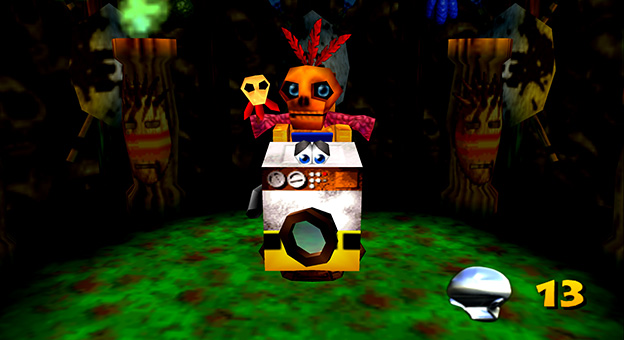
Rare: During development in the 1990s, did you think about what kind of games you’d be making in the future, and did any of them remotely resemble Sea of Thieves?
Gregg: I’m not going to pretend I had the foresight to see where we’d end up, but I do recall an interesting concept that shares some of Sea of Thieves‘ characteristics.
Every so often I used to play through The Legend of Zelda: A Link to the Past on the SNES. During one session, I thought “wouldn’t it be great if multiple Links could go on their adventures together in the same Hyrule world?”. At its heart it would still be a single player game, but having multiple Links in the same world would create some interesting possibilities. You could see someone who had already got the Master Sword and ask them where they found it. Or you could get other Links to help you tackle a dungeon.
I never took the concept any further than just thoughts, moving onto Viva Piñata instead. But looking back at the papery critters and that game’s original aims of connecting gardeners all over the world, maybe Sea of Thieves is the long-delayed shared world that we’ve been taking steps towards.
Rare: How does it feel to know that that the bear, the bird and their googly-eyed entourage still have dedicated fans 20 years on?
Gregg: It’s very humbling. I still have people asking me about things I can barely remember or were never thought about (or thought about properly) at the time. I don’t think I’ve ever been that passionate about a game myself but I can certainly appreciate it!
Rare: Thanks Gregg!
